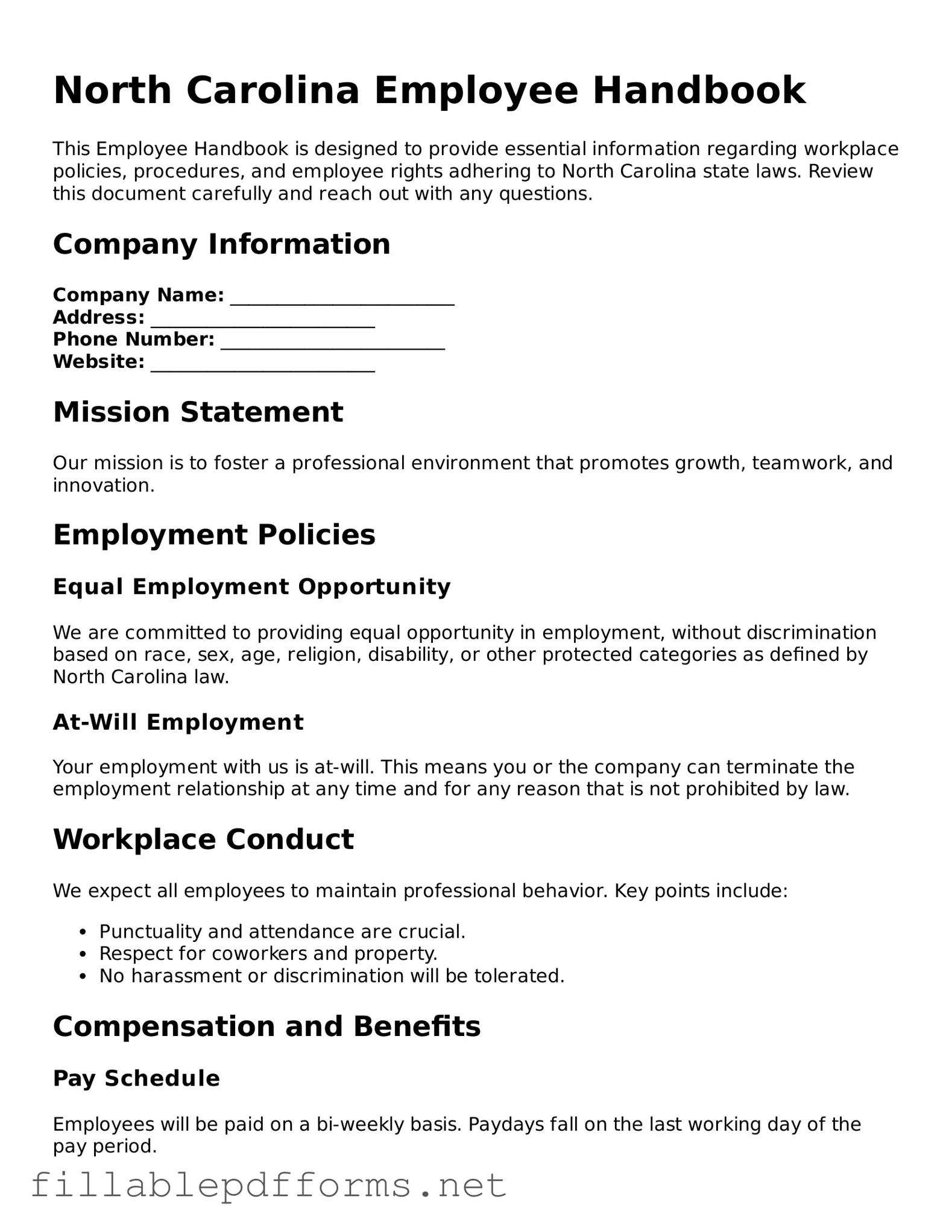Attorney-Verified Employee Handbook Form for North Carolina State
The North Carolina Employee Handbook form serves as a vital document that outlines the policies, procedures, and expectations within a workplace. This form provides clarity for both employers and employees, ensuring that everyone understands their rights and responsibilities. By establishing a clear framework, the handbook helps to promote a positive work environment and mitigate potential disputes.
Launch Editor Here
